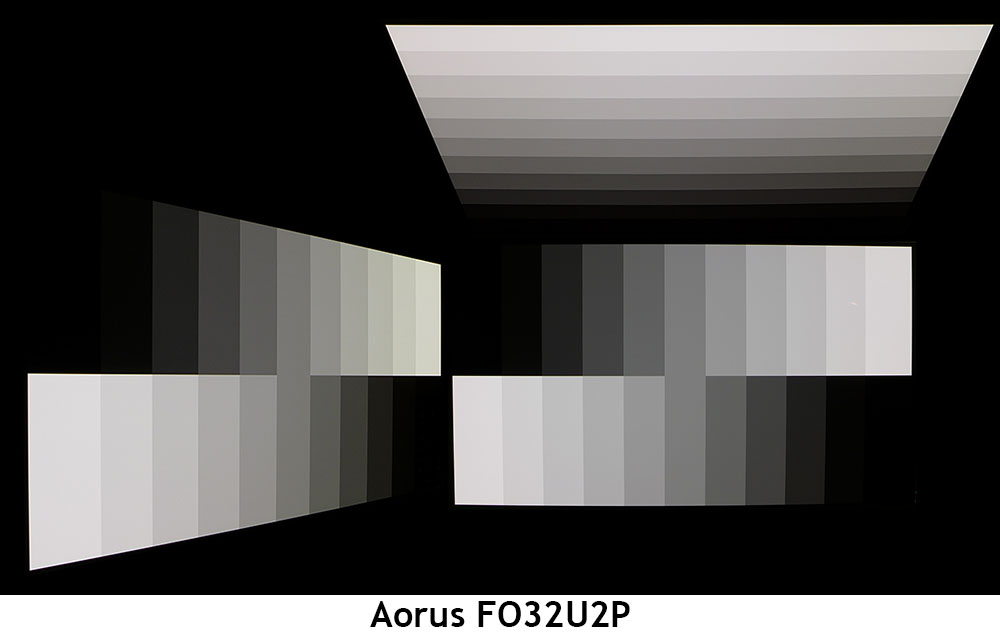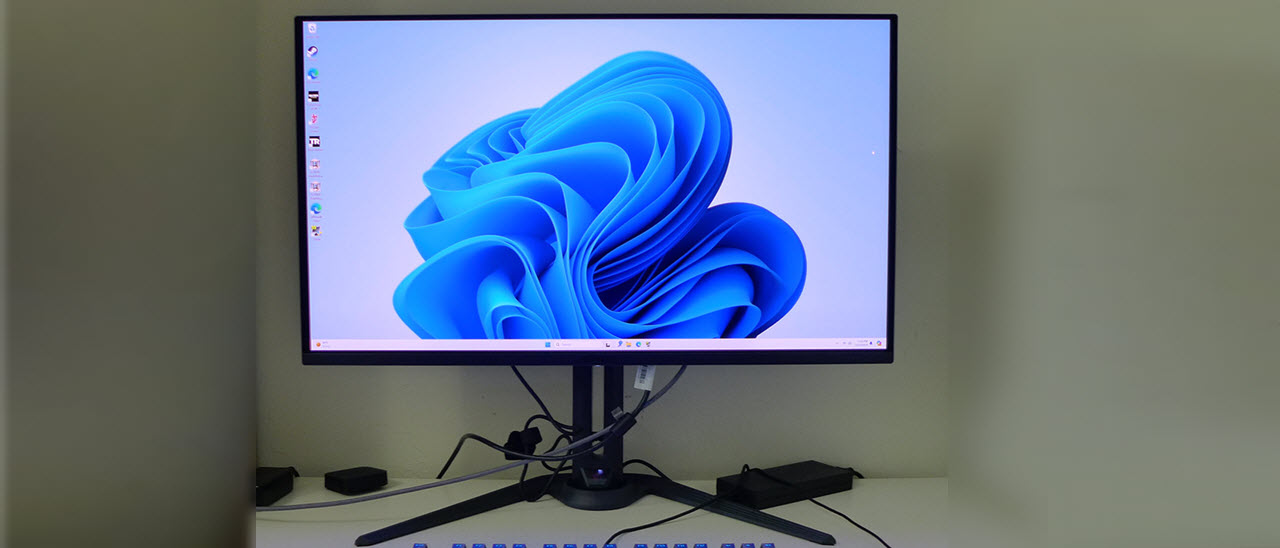Why you can trust Tom's Hardware
I’ve tested plenty of 240 Hz OLEDs, but aside from the FO32U2P and Alienware’s AW3225QF, they have all been QHD monitors. Since this review is about 4K, I’ve rounded up two other OLEDs, Asus’ PG42UQ and Philips’ 42M2N89; and two Mini LEDs, AOC’s PD32M and Acer’s X32.
Pixel Response and Input Lag
Click here to read up on our pixel response and input lag testing procedures.


If you want a speedy monitor, 240 Hz provides. The FO32U2P matches performance with the AW3225QF in the screen draw test but is a bit behind in the lag test with 25 versus 22 milliseconds. Highly skilled gamers might notice this difference, but most of us will not. The Aorus is plenty fast, and its motion processing is second to none. There is no blur or hesitation of any kind. Notice that the slower screens lag only in draw time. The overall lag winner is the Acer X32, with just 21ms total. While it is very responsive to control inputs, it shows some motion blur in fast sequences.
Test Takeaway: For the highest possible motion resolution, nothing can touch a 240 Hz OLED. The FO32U2P shows no motion blur whatsoever, and its control lag is low enough to be imperceptible to all but the most advanced players. It is 100% competition-ready and will deliver amazing game performance if you have enough video card juice to keep frame rates above 200fps in 4K resolution.
Viewing Angles

I have noted very subtle color and brightness shifts on other Quantum Dot OLED panels and the FO32U2P appears to exhibit the same behavior. This is due to the slightly higher degree of polarization caused by that extra layer. There is a tad more green visible, but the luminance and gamma are unchanged on the horizontal plane. The top view retains gamma well but dims about 10% and shifts towards red.
Screen Uniformity
To learn how we measure screen uniformity, click here.

All the OLEDs I’ve tested have excellent screen uniformity. I measure a dark gray field because black is too dark for the meter to detect. The FO32U2P’s result is well below the 10% visible threshold with a 6.44% score. The Alienware is one of the most uniform screens I’ve tested, but to the naked eye, it is no better than the Aorus.
Get Tom's Hardware's best news and in-depth reviews, straight to your inbox.
MORE: Best Gaming Monitors
MORE: How We Test PC Monitors
MORE: How to Buy a PC Monitor
Current page: Response, Input Lag, Viewing Angles and Uniformity
Prev Page Features and Specifications Next Page Brightness and Contrast
Christian Eberle is a Contributing Editor for Tom's Hardware US. He's a veteran reviewer of A/V equipment, specializing in monitors. Christian began his obsession with tech when he built his first PC in 1991, a 286 running DOS 3.0 at a blazing 12MHz. In 2006, he undertook training from the Imaging Science Foundation in video calibration and testing and thus started a passion for precise imaging that persists to this day. He is also a professional musician with a degree from the New England Conservatory as a classical bassoonist which he used to good effect as a performer with the West Point Army Band from 1987 to 2013. He enjoys watching movies and listening to high-end audio in his custom-built home theater and can be seen riding trails near his home on a race-ready ICE VTX recumbent trike. Christian enjoys the endless summer in Florida where he lives with his wife and Chihuahua and plays with orchestras around the state.
-
OL-US I have had this monitor (FO32U2P) for 1.5 years now.Reply
At first there were known issues with black screens during games. I sent it to Gigabyte Poland EU for repair via RMA. Received it in a couple of weeks, but when trying to update the firmware from F02 to F06, the monitor started showing only white. Ok, I sent it back via RMA again.
Received it back today after the second repair. And what do I see? They sent me my monitor with a motherboard from a cheaper monitor (FO32U2). Damn. Either these are unqualified repairmen or this is an attempt at fraud. I wrote to them demanding a refund (this is the third warranty repair) and will most likely contact lawyers for court.
I do not recommend Gigabyte and its service, people.
https://www.reddit.com/r/OLED_Gaming/comments/1mo4j4b/problems_with_gigabyte_aorus_fo32u2p/
